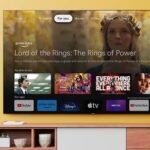Creating a green bedroom is more than just a design choice; it’s a commitment to sustainability, comfort, and health. With the rise in environmental awareness, homeowners are increasingly adopting eco-friendly practices, and the bedroom is an ideal place to start.
By incorporating sustainable materials, energy-efficient solutions, and thoughtful design choices, you can transform your bedroom into a space that supports both personal well-being and the planet.
This guide explores practical ways to build a green bedroom, focusing on sustainable materials, energy-saving practices, and the importance of ethical sourcing.
Choosing Sustainable Furniture and Décor
One of the most impactful ways to create an eco-friendly bedroom is through your choice of furniture and décor. Opt for pieces made from renewable or recycled materials.
When selecting décor, prioritise items with minimal chemical treatments. Low-VOC (volatile organic compounds) paints and finishes reduce indoor air pollution and improve air quality. You can also source second-hand furniture or upcycle existing items to minimise waste. Thrift shops and antique markets often offer unique, high-quality pieces that add character to your room while aligning with sustainable practices.
Textiles play a crucial role as well. Look for bedding, curtains, and rugs made from organic or recycled fibres such as organic cotton, hemp, or wool. These materials are free from harmful chemicals and pesticides, making them safer for you and the environment.
Prioritising Sustainable Sleep Solutions
Your bed is the heart of your bedroom, and making eco-conscious choices here can have a significant impact. Mattresses, mattress protectors, and bedding should all be considered when transitioning to a greener lifestyle.
When exploring sustainable bedding options, bamboo mattress protectors are a noteworthy choice. Bamboo is naturally hypoallergenic, breathable, and moisture-wicking, making it ideal for maintaining a comfortable and healthy sleeping environment. Additionally, bamboo cultivation requires less water than cotton and avoids the use of harmful pesticides, making it an environmentally friendly option.
For expert advice on how bamboo bedding can improve your sleep quality, you can visit the Panda London showroom. Their specialists can guide you in selecting products that align with your comfort and sustainability goals.
Look for mattresses made from organic latex, natural wool, or cotton, as these materials are biodegradable and free from harmful chemicals. Traditional mattresses often contain synthetic materials that release harmful gasses over time, impacting both your health and the environment.
Improving Energy Efficiency in Your Bedroom
Energy efficiency is a cornerstone of a green bedroom. From lighting to temperature control, small adjustments can significantly reduce energy consumption. Start with energy-efficient lighting options like LED bulbs, which use up to 75% less energy than traditional incandescent bulbs and last much longer.
For temperature control, consider investing in thermal curtains or blinds to regulate indoor temperatures naturally. These window treatments can keep your bedroom warm in the winter and cool in the summer, reducing the need for heating and air conditioning. Installing a programmable thermostat can also optimise energy use by maintaining ideal temperatures only when needed.
Natural ventilation is another effective method for keeping your bedroom comfortable. Open windows during cooler times of the day to let in fresh air, reducing the reliance on air-conditioning systems. Ceiling fans, set to rotate counter-clockwise in summer and clockwise in winter, are a cost-effective way to circulate air efficiently.
Incorporating Natural Elements for a Tranquil Ambiance
Bringing nature into your bedroom creates a calming environment while enhancing air quality. Plants are a natural choice for this purpose, as they not only improve air quality by absorbing carbon dioxide and releasing oxygen but also add a touch of serenity to your space.
Some of the best plants for bedrooms include snake plants, spider plants, and peace lilies. These are low-maintenance options that thrive indoors and require minimal watering. If you’re concerned about allergens, opt for non-flowering plants or varieties with low pollen production.
Natural light is another crucial element. Position your bed and seating areas to take advantage of daylight, reducing the need for artificial lighting during the day. For added privacy without compromising natural light, sheer curtains made from organic fabrics are a great solution.
To further integrate natural elements, consider wooden or stone accents for wall panels, flooring, or decorative items. These materials lend a timeless, earthy aesthetic to your room while being more sustainable than synthetic alternatives.
Avoiding Toxins in Your Bedroom
Indoor air quality is often overlooked but is crucial for a healthy and sustainable bedroom. Many conventional furnishings and products release harmful chemicals over time, a process known as off-gassing. Common culprits include synthetic mattresses, adhesives in furniture, and conventional cleaning products.
To combat this, opt for items labelled as non-toxic or certified by environmental standards. For cleaning, choose natural or homemade solutions using ingredients like vinegar, baking soda, and essential oils. These are effective, affordable, and free from harmful chemicals.
Air purifiers with HEPA filters can also enhance indoor air quality, especially in urban environments where pollutants are more prevalent. Regularly cleaning or replacing air filters in your HVAC system will further reduce allergens and toxins.
Creating a Routine That Supports Sustainability
Building a green bedroom extends beyond materials and products; it’s about adopting sustainable habits. Simple actions, such as unplugging electronics when not in use and reducing reliance on synthetic fragrances, contribute to a healthier environment. Essential oil diffusers or soy-based candles are eco-friendly alternatives for adding pleasant scents to your space.
Making your bedroom a tech-free zone can also enhance its sustainability and your well-being. Reducing screen time before bed not only saves electricity but also improves sleep quality. Consider setting up a dedicated charging station outside your bedroom to discourage device use.
Additionally, staying informed about new sustainable practices and products allows you to make continuous improvements to your green bedroom. Subscribing to eco-friendly blogs or joining local sustainability groups can provide valuable insights and inspiration.
All in all, building a green bedroom is a rewarding endeavour that supports both personal well-being and the planet. By choosing sustainable materials, improving energy efficiency, and minimising waste, you can create a space that reflects your commitment to the environment. The addition of natural elements and toxin-free products enhances the room’s comfort and health benefits.
For those looking to elevate their bedroom’s sustainability, eco-friendly solutions can make a significant difference.
With thoughtful choices and a commitment to greener living, your bedroom can become a sanctuary of sustainability and comfort.








